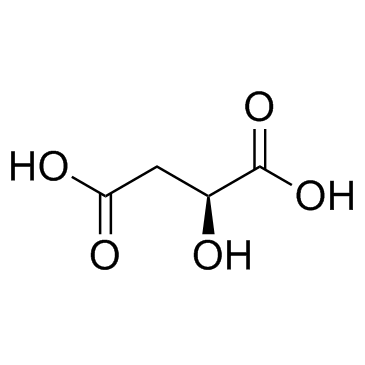Proteases
Proteases is a general term for a class of enzymes that hydrolyze protein peptide chains. According to the way they degrade polypeptides, they are divided into two categories: endopeptidases and telopeptidases. The former can cut the large molecular weight polypeptide chain from the middle to form prions and peptones with smaller molecular weights; the latter can be divided into carboxypeptidase and aminopeptidase, which respectively remove the peptide from the free carboxyl terminus or free amino terminus of the polypeptide one by one. Chain hydrolysis produces amino acids.
A general term for a class of enzymes that hydrolyze peptide bonds in proteins. According to the way they hydrolyze polypeptides, they can be divided into endopeptidases and exopeptidases. Endopeptidase cleaves the interior of the protein molecule to form smaller molecular weight peptones and peptones. Exopeptidase hydrolyzes peptide bonds one by one from the end of the free amino group or carboxyl group of protein molecules, and frees amino acids, the former is aminopeptidase and the latter is carboxypeptidase. Proteases can be classified into serine proteases, sulfhydryl proteases, metalloproteases and aspartic proteases according to their active centers and optimum pH. According to the optimum pH value of its reaction, it is divided into acidic protease, neutral protease and alkaline protease. The proteases used in industrial production are mainly endopeptidases.
Proteases are widely found in animal offal, plant stems and leaves, fruits and microorganisms. Microbial proteases are mainly produced by molds and bacteria, followed by yeast and actinomycetes.
Enzymes that catalyze the hydrolysis of proteins. There are many kinds, the important ones are pepsin, trypsin, cathepsin, papain and subtilisin. Proteases have strict selectivity for the reaction substrates they act on. A protease can only act on certain peptide bonds in protein molecules, such as the peptide bonds formed by the hydrolysis of basic amino acids catalyzed by trypsin. Proteases are widely distributed, mainly in the digestive tract of humans and animals, and are abundant in plants and microorganisms. Due to limited animal and plant resources, the industrial production of protease preparations is mainly prepared by fermentation of microorganisms such as Bacillus subtilis and Aspergillus terrestris.
Ziele für Proteases
- Caspase(114)
- Aminopeptidase(24)
- ACE(74)
- Calpains(20)
- Carboxypeptidase(10)
- Cathepsin(81)
- DPP-4(31)
- Elastase(26)
- Gamma Secretase(67)
- HCV Protease(59)
- HSP(113)
- HIV Integrase(37)
- HIV Protease(47)
- MMP(228)
- NS3/4a protease(8)
- Serine Protease(18)
- Thrombin(58)
- Urokinase(4)
- Cysteine Protease(0)
- Other Proteases(18)
- Tyrosinases(47)
- 15-PGDH(1)
- Acetyl-CoA Carboxylase(13)
- Acyltransferase(59)
- Aldehyde Dehydrogenase (ALDH)(28)
- Aminoacyl-tRNA Synthetase(9)
- ATGL(1)
- Dipeptidyl Peptidase(56)
- Drug Metabolite(457)
- E1/E2/E3 Enzyme(90)
- Endogenous Metabolite(1636)
- FABP(30)
- Farnesyl Transferase(23)
- Glutaminase(14)
- Glutathione Peroxidase(14)
- Isocitrate Dehydrogenase (IDH)(28)
- Lactate Dehydrogenase(17)
- Lipoxygenase(234)
- Mitochondrial Metabolism(207)
- NEDD8-activating Enzyme(7)
- Neprilysin(12)
- PAI-1(13)
- Ser/Thr Protease(41)
- Tryptophan Hydroxylase(13)
- Xanthine Oxidase(18)
- MALT1(10)
- PCSK9(1)
Produkte für Proteases
- Bestell-Nr. Artikelname Informationen
-
GC11282
β-Estradiol
Geschlechtshormon
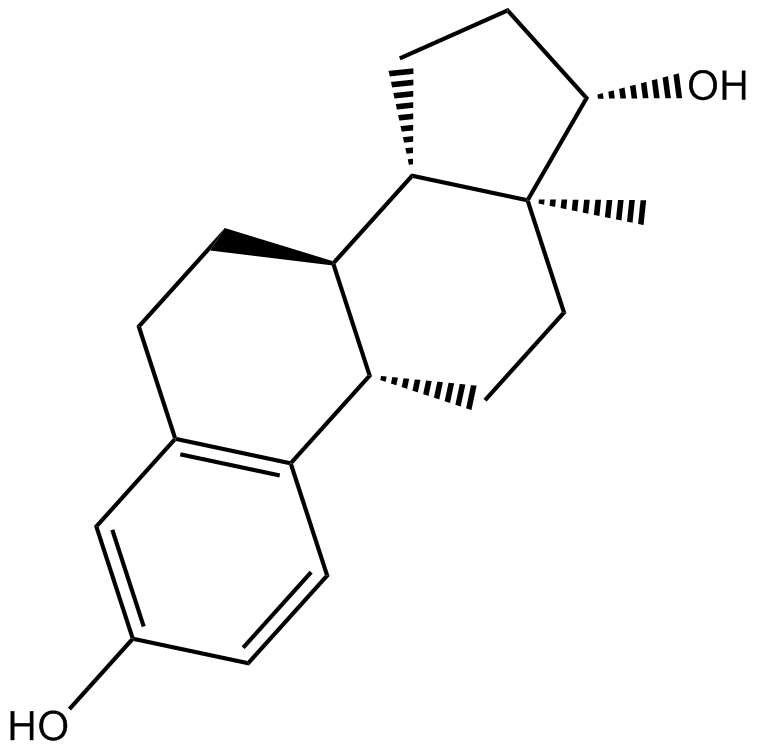
-
GC41183
α-Carotene
α-Carotin, eine Vorstufe von Vitamin A, wird als antimetastatisches Mittel oder als Adjuvans fÜr Krebsmedikamente verwendet. α-Carotin wird aus gelb-orangen und dunkelgrÜnen GemÜsen isoliert.

-
GC45208
α-hydroxy Metoprolol
α-hydroxy Metoprolol is an active metabolite of the β1-adrenergic receptor blocker metoprolol.

-
GC48948
α-Ketoglutaric Acid (sodium salt)
α-KetoglutarsÄure (Natriumsalz) (Alpha-KetoglutarsÄure-Natrium) ist ein Zwischenprodukt bei der Produktion von ATP oder GTP im Krebszyklus.

-
GC40718
α-Muricholic Acid
α-MuricholsÄure ist die am hÄufigsten vorkommende primÄre GallensÄure bei Nagetieren.

-
GC40480
α-Phenyl-α-(2-pyridyl)acetonitrile
α-Phenyl-α-(2-pyridyl)thioacetamide, also known as antigastrin and SC-15396, is an inhibitor of gastric acid secretion.

-
GC38287
α-Pyridone
α-Pyridon ist ein körpereigener Metabolit.
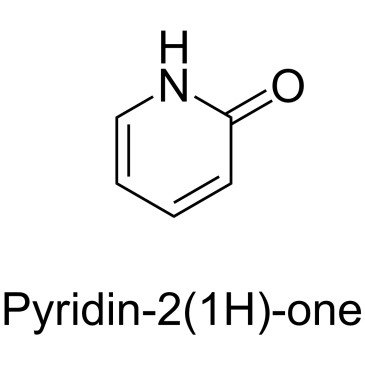
-
GC38000
β-Boswellic acid
- Boswelliasäure wird aus dem Gummiharz von Boswellia serrate isoliert . β-Boswelliasäure hemmt die Synthese von DNA, RNA und Protein in menschlichen Leukämie-HL-60-Zellen.
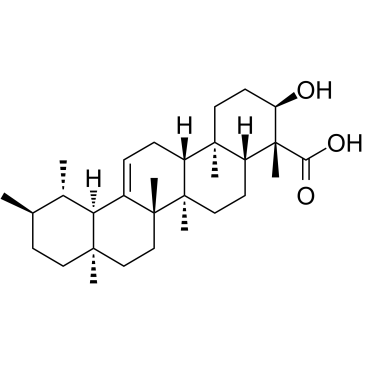
-
GC63275
β-Cryptoxanthin
β-Cryptoxanthin ((3R)-β-Cryptoxanthin), isoliert aus Satsuma-Mandarinenorange, ist ein sauerstoffreiches Carotinoid und ein starkes Antioxidans.
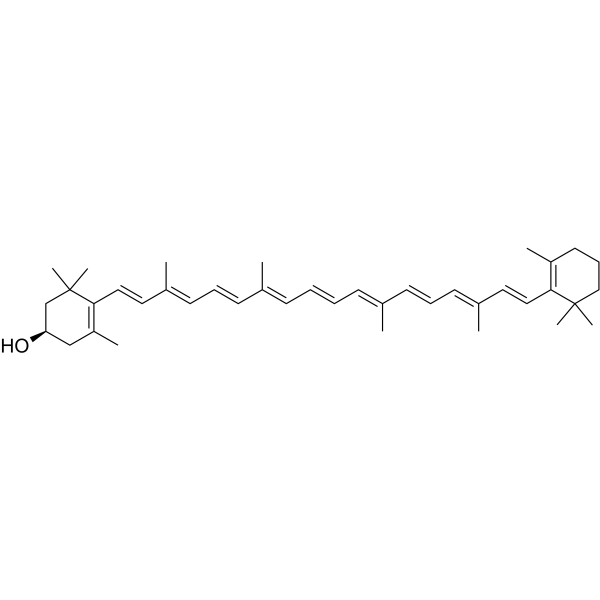
-
GC40777
β-D-Glucose
D-Glucose, a naturally occurring monosaccharide found in plants, is the primary energy source for living organisms.

-
GC66842
β-Methylcrotonyl coenzyme A lithium
β-Methylcrotonyl Coenzym A Lithium ist ein Zwischenprodukt im Leucinstoffwechsel und kann als Substrat zur Untersuchung der Spezifität und Kinetik von β-Methylcrotonyl Coenzym A Carboxylase (MCCase) verwendet werden.
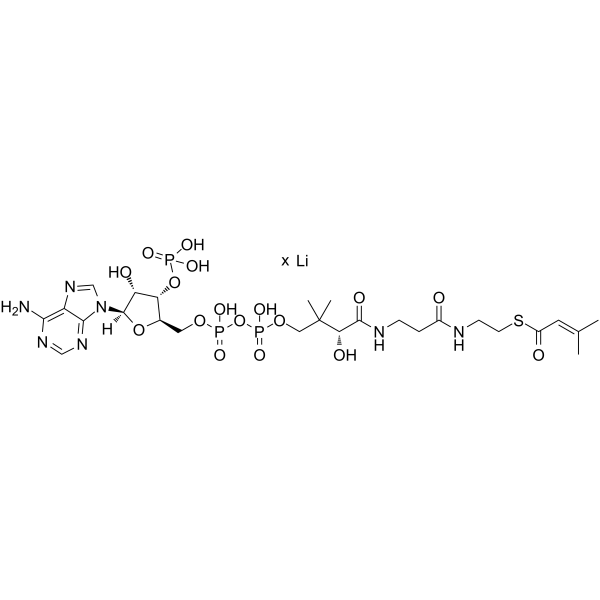
-
GC40719
β-Muricholic Acid
Ein murinspezifisches primäres Gallensalz

-
GC67484
β-Nicotinamide adenine dinucleotide reduced dipotassium
β-Nicotinamid-Adenin-Dinukleotid-reduziertes Dikalium ist ein oral aktives reduziertes Coenzym. β-Nicotinamidadenindinukleotid-reduziertes Dikalium ist ein Donor von ADP-Riboseeinheiten in ADP-Ribosylierungsreaktionen und ein Vorläufer von zyklischer ADP-Ribose. β-Nicotinamidadenindinukleotid-reduziertes Dikalium spielt eine Rolle als regenerativer Elektronendonor im zellulären Energiestoffwechsel, einschließlich Glykolyse, β-Oxidation und Tricarbonsäure (TCA)-Zyklus.
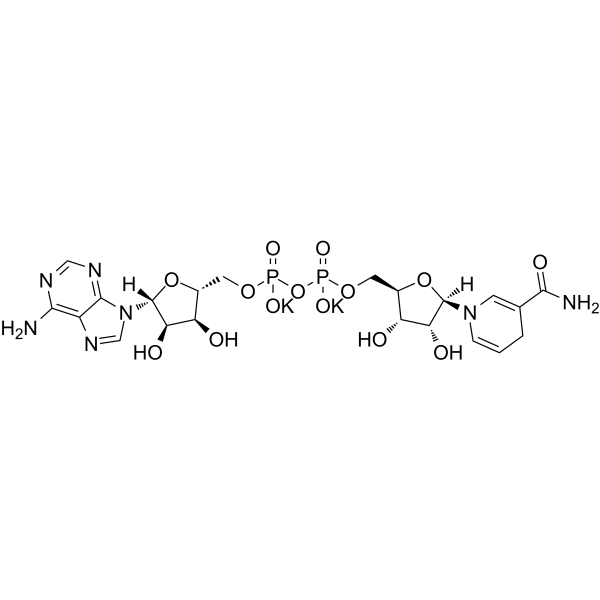
-
GC70185
β-Sitostenone
β-Sitostenon ist ein Steroid, das aus Cochlospermum vitifolium isoliert wurde. Es kann die Aktivität des Enzyms Tyrosinase hemmen und hat anti-melanogene und antitumorale Eigenschaften.

-
GC38010
γ-Aminobutyric acid
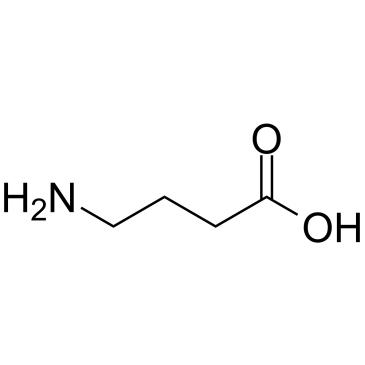
-
GC63279
γ-Glu-Gly TFA
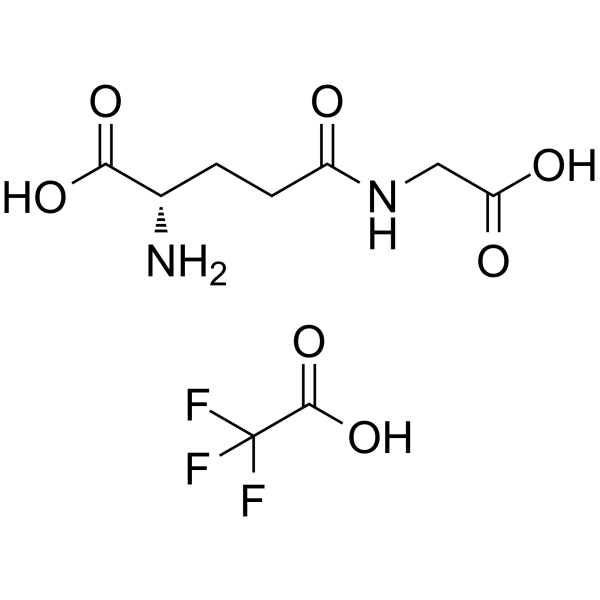
-
GC38011
γ-Secretase modulator 4

-
GC66048
δ-Secretase inhibitor 11
δ-Secretase-Inhibitor 11 (Verbindung 11) ist ein oral aktiver, potenter, BHS-penetrierter, nicht toxischer, selektiver und spezifischer ⋴-Secretase-Inhibitor mit einem IC50 von 0,7 μM. δ-Secretase-Inhibitor 11 interagiert sowohl mit dem aktiven Zentrum als auch mit dem allosterischen Zentrum von δ-Secretase. δ-Secretase Inhibitor 11 schwÄcht die Spaltung von Tau und APP (Amyloid Precursor Protein) ab. δ-Secretase-Inhibitor 11 verbessert synaptische Dysfunktion und kognitive BeeintrÄchtigungen in transgenen Mausmodellen mit Tau P301S und 5XFAD. δ-Secretase Inhibitor 11 kann fÜr die Erforschung der Alzheimer-Krankheit verwendet werden.
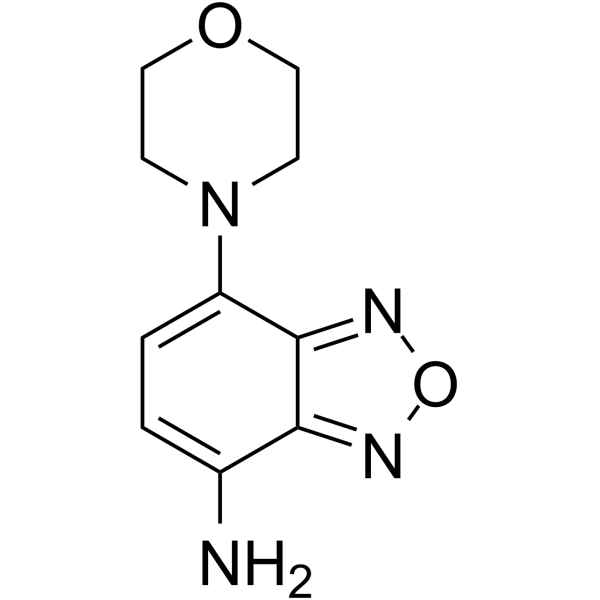
-
GC15975
α-Estradiol
α-Estradiol ist ein schwaches Östrogen und ein 5&7#945;-Reduktasehemmer, der als topisches Medikament bei der Behandlung von androgener Alopezie verwendet wird.
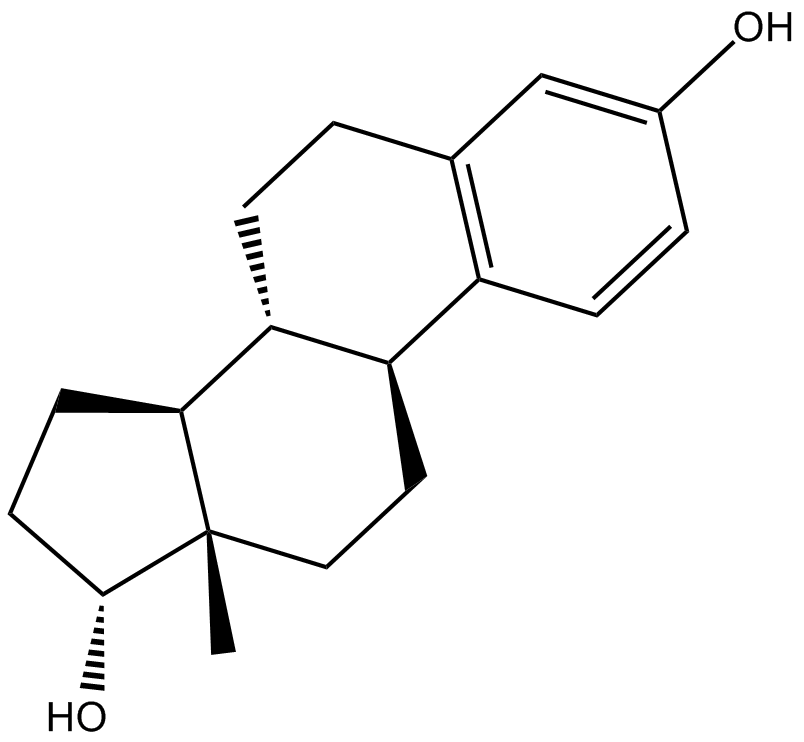
-
GC30187
γ-Glu-Phe (γ-Glutamylphenylalanine)
γ-Glu-Phe (γ-Glutamylphenylalanin) (⋳-Glutamylphenylalanin) wird von Bacillus amyloliquefaciens (GBA) und Aspergillus oryzae (GAO) synthetisiert.
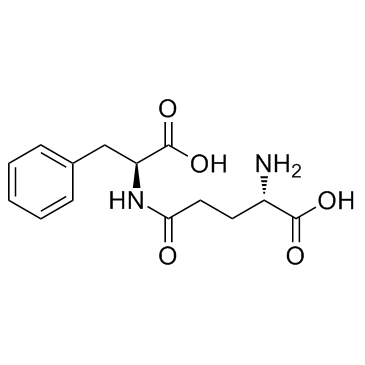
-
GC41552
ω-3 Arachidonic Acid
ω-3 Arachidonic acid is a rare PUFA found in trace amounts in dietary sources.

-
GC40259
(±)-β-Tocopherol
(±)-β-Tocopherol is a lipid-soluble form of vitamin E with antioxidant activity.

-
GC40260
(±)-γ-Tocopherol
(±)-γ-Tocopherol is a form of vitamin E with antioxidant and anti-inflammatory properties.

-
GC41661
(±)-4-hydroxy Propranolol β-D-Glucuronide
(±)-4-hydroxy Propranolol β-D-glucuronide is a metabolite of (±)-4-hydroxy propranolol, which is a metabolite of propranolol.

-
GC34961
(±)-BI-D
(±)-BI-D ist ein potenter ALLINI (ein allosterischer IN-Inhibitor), der Integrase an der LEDGF/p75-Bindungsstelle bindet.
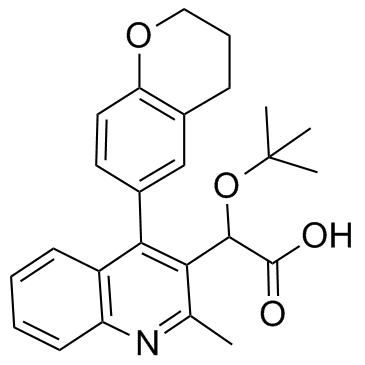
-
GC46284
(±)-Cotinine-d3
An internal standard for the quantification of cotinine

-
GC41670
(±)-Epinephrine (hydrochloride)
(±)-Epinephrine is a natural neurotransmitter that is released from the adrenal medulla and activates adrenoceptors (Kis = 15, 735, and 3,970 nM for α1A-, β2-, and β1-adrenergic receptors, respectively).

-
GC41671
(±)-Equol 4'-sulfate (sodium salt)
(±)-Equol 4'-sulfate is a gut-mediated phase II metabolite of the isoflavonoid phytoestrogen (±)-equol.

-
GC41315
(±)-Ketoprofen Glucuronide
(±)-Ketoprofen glucuronide is a phase II metabolite of the non-steroidal anti-inflammatory drug (NSAID) ketoprofen.

-
GC38369
(±)-Leucine

-
GC65599
(±)-Leucine-d10
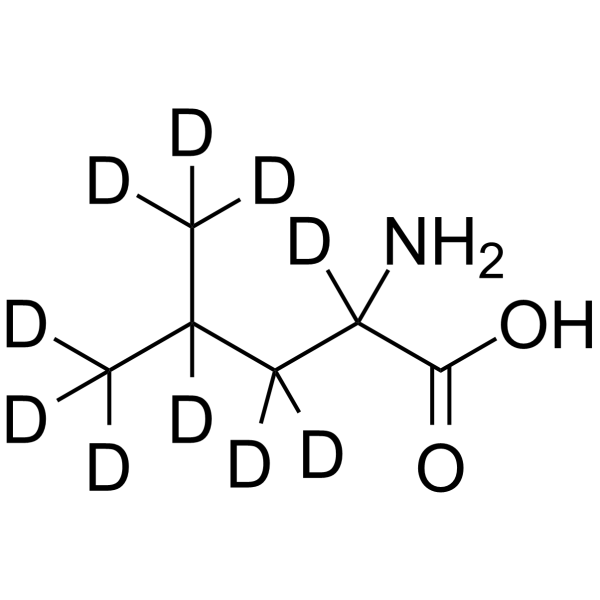
-
GC49875
(±)-N-desmethyl Venlafaxine (hydrochloride)
A minor active metabolite of venlafaxine

-
GC39271
(±)-Naringenin
(±)-Naringenin ist ein natürlich vorkommendes Flavonoid.
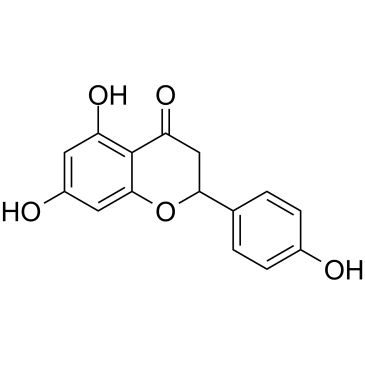
-
GC13890
(±)-Palmitoylcarnitine chloride
(±)-Palmitoylcarnitinchlorid ist ein von Fettsäuren abgeleitetes mitochondriales Substrat und verringert selektiv das Zellüberleben in Darm- und Prostatakrebszellen, indem es entzündungsfördernde Signalwege, Ca2+-Einstrom und DHT-ähnliche Wirkungen beeinflusst.
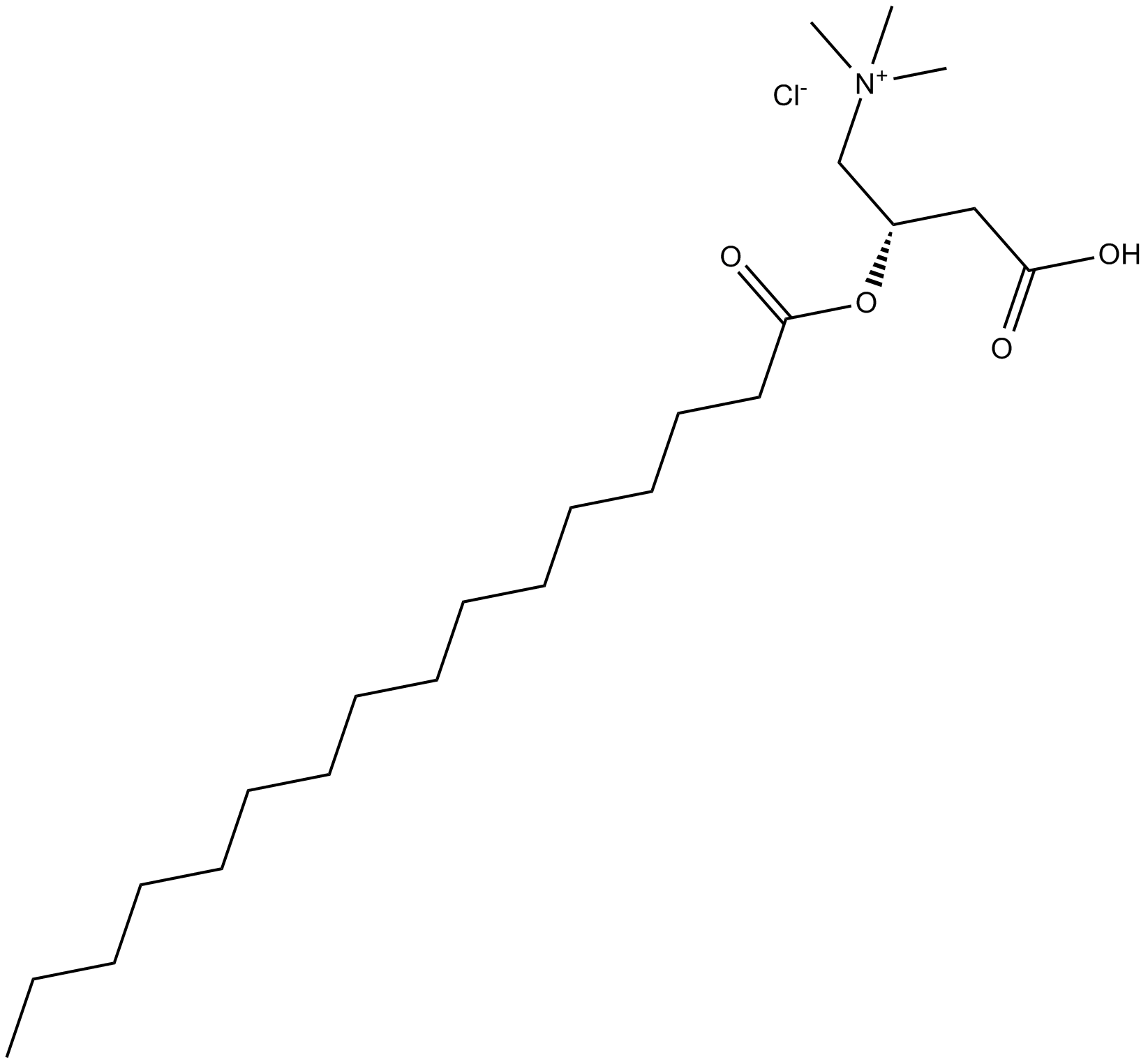
-
GC40229
(±)-Warfarin-d5
(±)-Warfarin-d5 is intended for use as an internal standard for the quantification of warfarin by GC- or LC-MS.

-
GC41649
(±)13-HODE cholesteryl ester
(±)13-HODE cholesteryl ester was originally extracted from atherosclerotic lesions and shown to be produced by Cu2+-catalyzed oxidation of LDL.

-
GC19444
(±)20-HDHA
(±)20-HDHA ((±)20-HDoHE) ist ein racemisches Gemisch und ein Autoxidationsprodukt von Docosahexaensäure (DHA).

-
GC40828
(±)5-HETE lactone
(±)5-HETE lactone is a cyclic ester formed by acid-catalyzed nucleophilic addition of the C-5 hydroxyl to the C-1 carboxyl of (±)5-HETE.

-
GC40442
(±)8-HETE
(±)8-HETE ist eine der sechs Monohydroxyfettsäuren, die durch die nicht-enzymatische Oxidation von Arachidonsäure hergestellt werden.

-
GC40801
(±)9(10)-DiHOME
(±)9(10)-DiHOME ist das Racemat von 9,10-DiHOME.

-
GC41666
(±)9-HODE cholesteryl ester
(±)9-HODE cholesteryl ester was originally extracted from atherosclerotic lesions and shown to be produced by Cu2+-catalyzed oxidation of LDL.
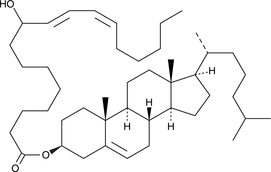
-
GC30586
(±) Anabasine
(±) Anabasin ist ein zweiphasiges Muskelrelaxans.
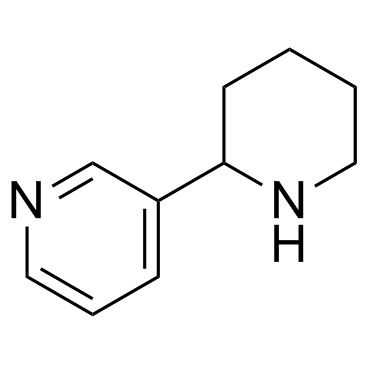
-
GC61647
(+)-Longifolene
(+)-Longifolen ist ein Sesquiterpenoid und ein Metabolit bei Kaninchen.
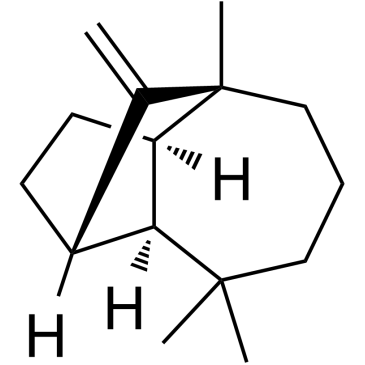
-
GC10675
(+,-)-Octopamine HCl
Octopamin (()-p-Octopamin)-Hydrochlorid, ein biogenes Monoamin, das strukturell mit Noradrenalin verwandt ist, wirkt als Neurohormon, Neuromodulator und Neurotransmitter bei Wirbellosen.
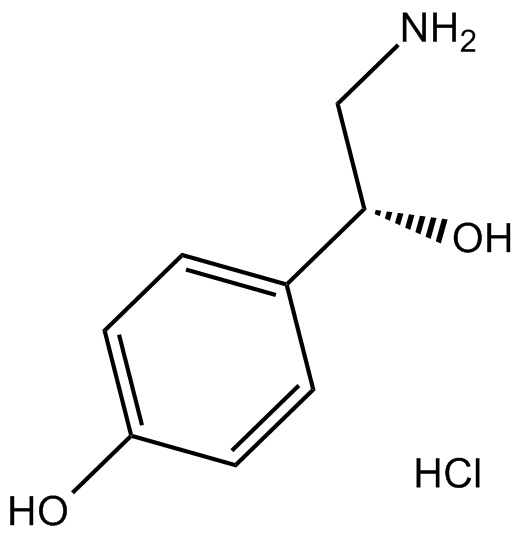
-
GC45245
(-)-Caryophyllene oxide
(-)-Caryophyllenoxid, isoliert aus Annona squamosa L.

-
GC17470
(-)-Cotinine
(-)-Cotinin ((-)-(-)-Cotinin), ein Tabakalkaloid und ein Hauptmetabolit von Nikotin, wird als biologischer Indikator zur Messung der Zusammensetzung von Tabakrauch verwendet
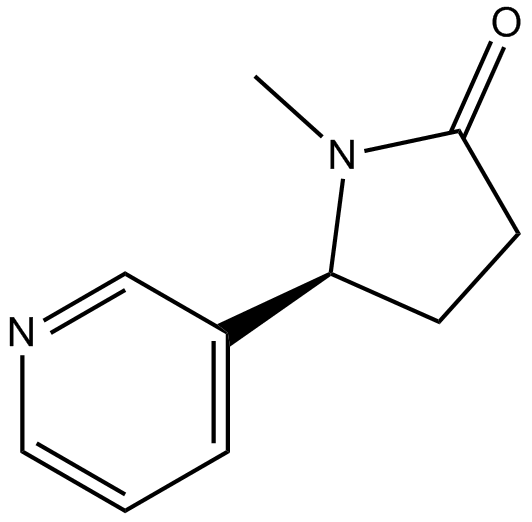
-
GC17242
(-)-epigallocatechin
(-)-Epigallocatechin (Epigallocatechin) ist das am hÄufigsten vorkommende Flavonoid in grÜnem Tee, kann an ungefaltete native Polypeptide binden und die Umwandlung in Amyloidfibrillen verhindern.
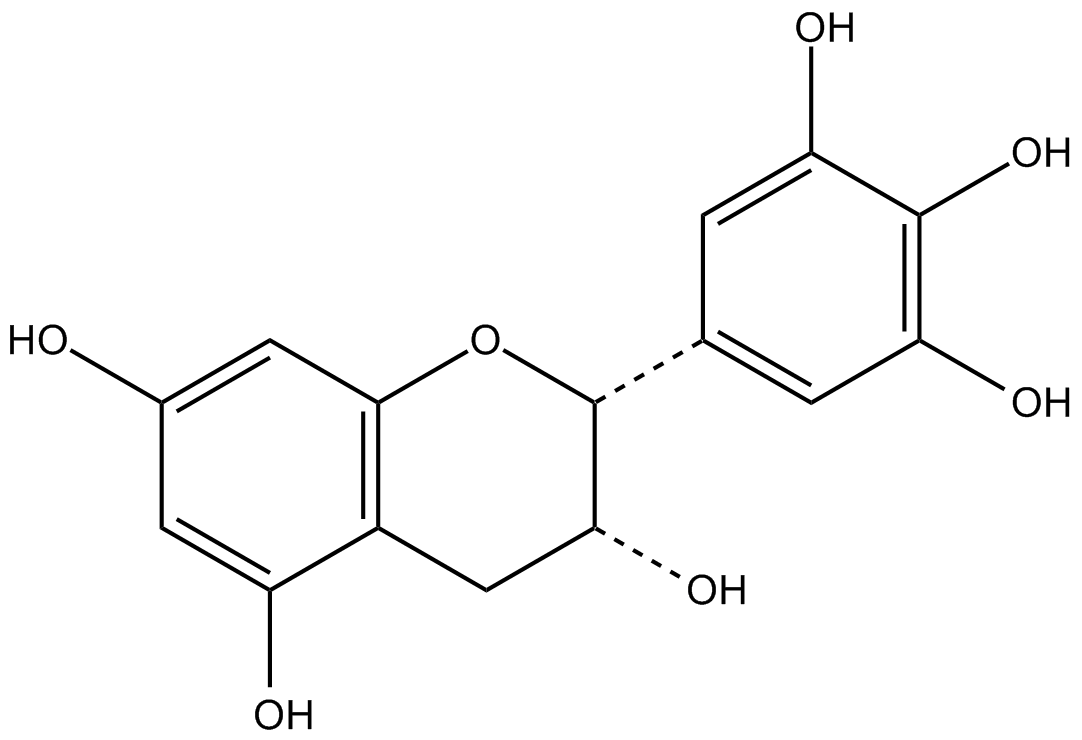
-
GC14049
(-)-Epigallocatechin gallate (EGCG)
Ein Phenol mit vielfältigen biologischen Aktivitäten.
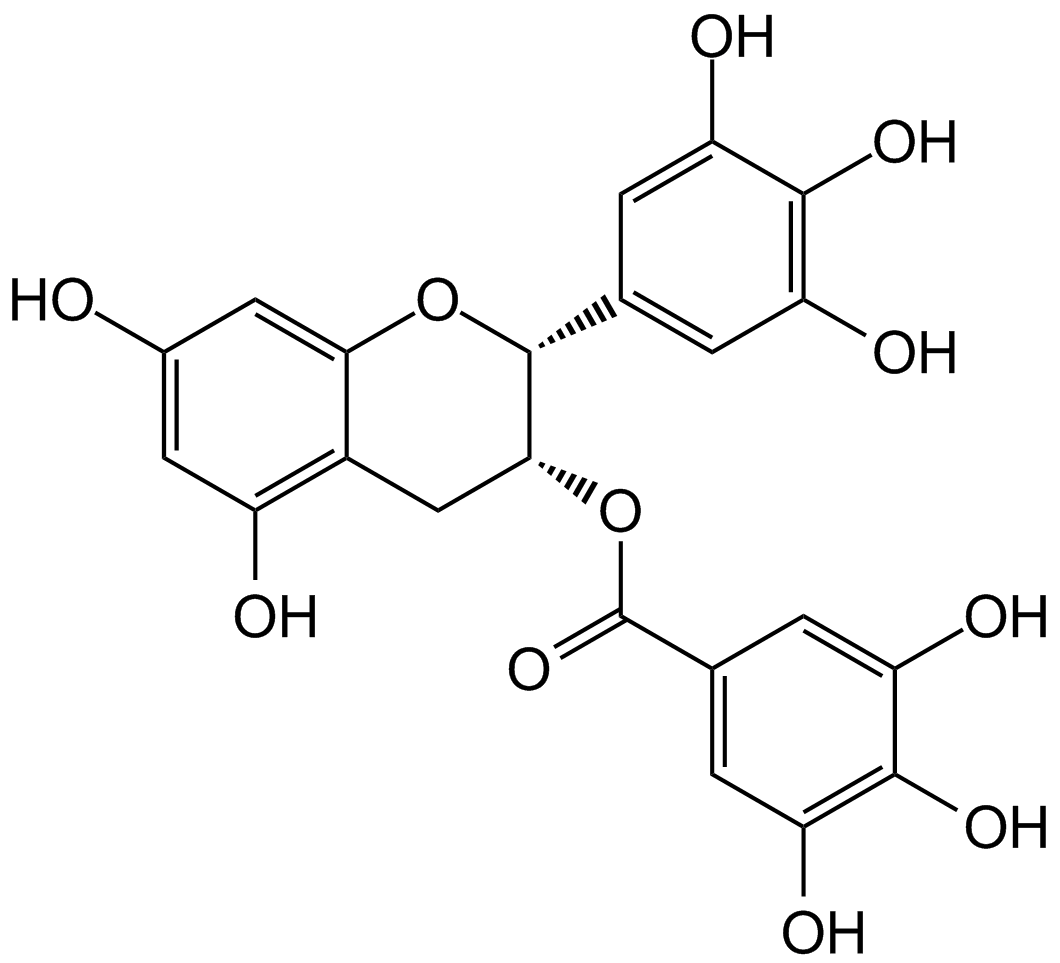
-
GC31620
(-)-Fucose (6-Desoxygalactose)
(-)-Fucose (6-Desoxygalactose) wird als Mitglied der Hexosen klassifiziert, spielt eine Rolle bei der Bestimmung der Antigen-Substruktur der A- und B-Blutgruppe, der Selectin-vermittelten Leukozyten-Endothel-AdhÄsion und Wirt-Mikroben-Wechselwirkungen.
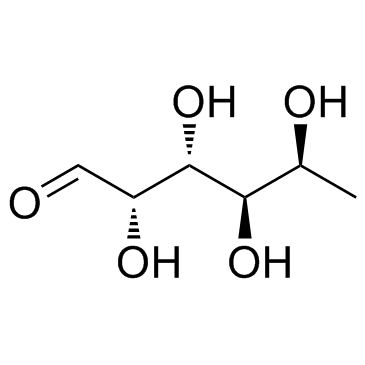
-
GC34951
(-)-Menthol
(-)-Menthol ist eine SchlÜsselkomponente von PfefferminzÖl, das das transiente Rezeptorpotential Melastatin 8 (TRPM8), einen Ca2+--durchlÄssigen nichtselektiven Kationenkanal, bindet und aktiviert, um [Ca2+]i zu erhÖhen. Antitumor-AktivitÄt.

-
GC45252
(-)-Sitagliptin Carbamoyl Glucuronide
(-)-Sitagliptin carbamoyl glucuronide is a minor phase II metabolite of the dipeptidyl peptidase 4 (DPP-4) inhibitor (-)-sitagliptin.

-
GC18622
(2'S)-Nicotine-1-oxide
(2'S)-Nicotine-1-oxide is a metabolite of nicotine .
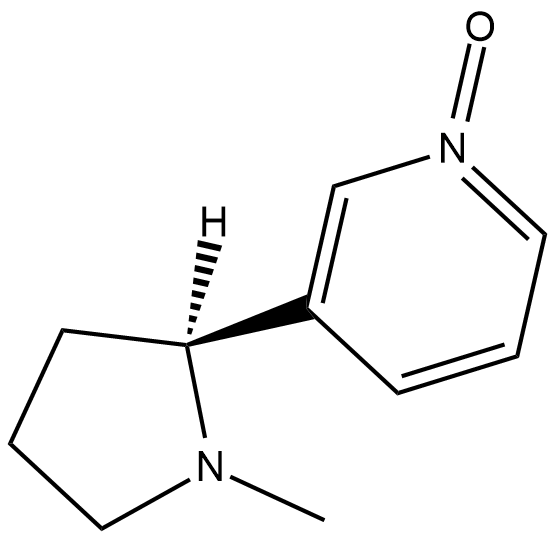
-
GC38299
(2-Aminoethyl)phosphonic acid
(2-Aminoethyl)phosphonsÄure ist ein kÖrpereigener Metabolit.
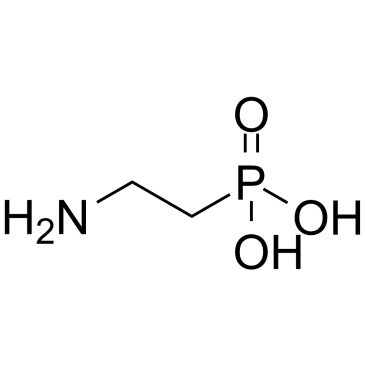
-
GC68509
(25R)-12α-Hydroxyspirost-4-en-3-one
(25R)-12α-Hydroxyspirost-4-en-3-one ist ein sekundäres Stoffwechselprodukt, das durch die Wirkung von Nocardia globerula auf Hecogenin entsteht.
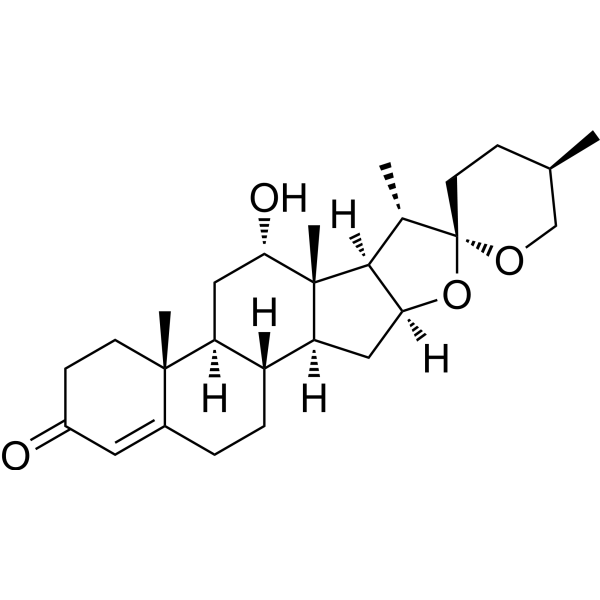
-
GC38265
(2R,3R)-2,3-Dihydroxysuccinic acid
(2R,3R)-2,3-DihydroxybernsteinsÄure (L-(+)-WeinsÄure) ist ein kÖrpereigener Metabolit.

-
GC62731
(2R,3R)-Butane-2,3-diol
(2R,3R)-Butan-2,3-diol ist ein kÖrpereigener Metabolit.

-
GC38296
(2S,3R,4S,5R)-2-Amino-3,4,5,6-tetrahydroxyhexanal hydrochloride
(2S,3R,4S,5R)-2-Amino-3,4,5,6-tetrahydroxyhexanalhydrochlorid ist ein endogener Metabolit.

-
GC33797
(3-Carboxypropyl)trimethylammonium chloride
(3-Carboxypropyl)trimethylammoniumchlorid ist eine angiopathische Substanz, die als intermediÄrer Metabolit von Darmmikrobiota produziert wird, die sich von Carnitin in diÄtetischem rotem Fleisch ernÄhren.
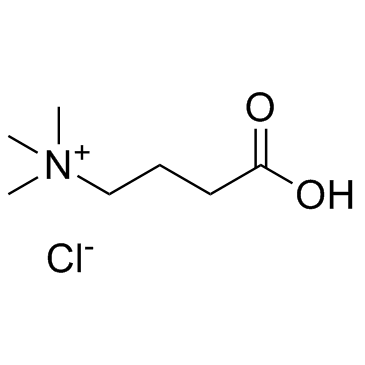
-
GC41694
(3S)-hydroxy Quinidine
(3S)-hydroxy Quinidine is an active quinidine metabolite.

-
GC38144
(3S,4R,5S)-1,3,4,5,6-Pentahydroxyhexan-2-one
A monosaccharide
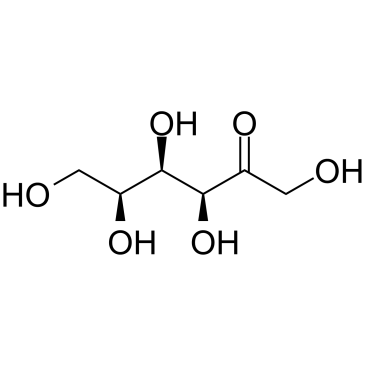
-
GC38283
(3S,4S,5R)-1,3,4,5,6-Pentahydroxyhexan-2-one
(3S,4S,5R)-1,3,4,5,6-Pentahydroxyhexan-2-on (D-(-)-Tagatose) ist ein seltenes, in der Natur vorkommendes Monosaccharid mit prÄbiotischen Eigenschaften.

-
GC12395
(D)-(+)-Neopterin
(D)-(+)-Neopterin (D-(+)-(D)-(+)-Neopterin, ein Abbauprodukt von Guanosintriphosphat (GTM), dient als Marker fÜr die Aktivierung des zellulÄren Immunsystems.
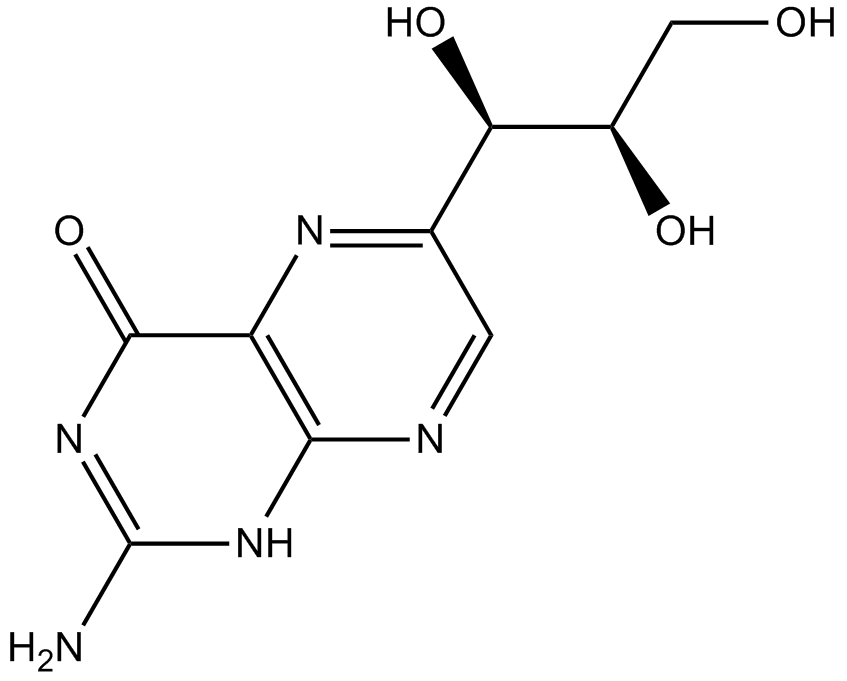
-
GC60399
(E)-10-Hydroxynortriptyline
(E)-10-Hydroxynortriptylin (E-10-OH-NT) ist ein Metabolit von Nortriptylin.
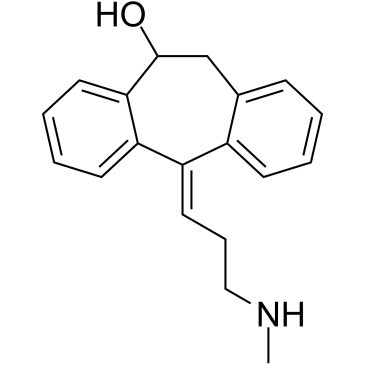
-
GC65239
(E)-3,4-(Methylenedioxy)cinnamic acid
(E)-3,4-(Methylendioxy)zimtsÄure ist ein ZimtsÄurederivat, das aus der Stammrinde von Brombya platynema gewonnen wird.
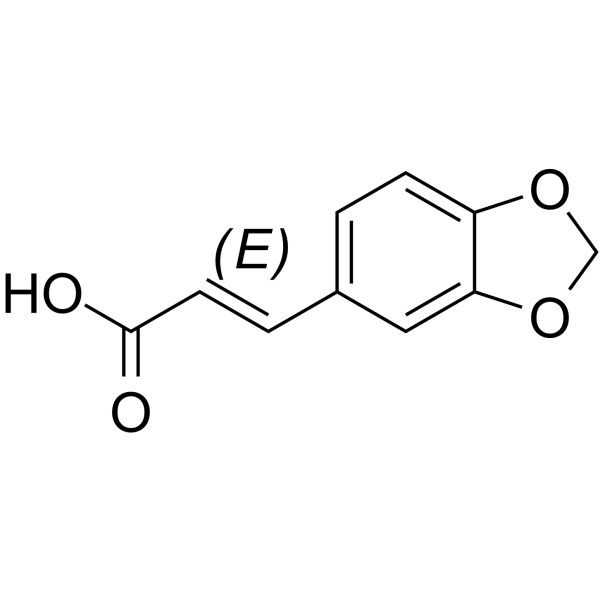
-
GC38684
(E)-m-Coumaric acid
(E)-m-CumarinsÄure (3-HydroxyzimtsÄure) ist eine aromatische SÄure, die in Lebensmitteln reichlich vorhanden ist.
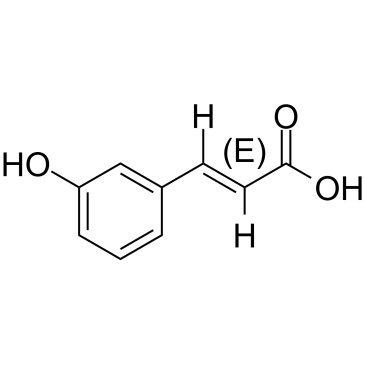
-
GC62734
(E)-Oct-2-enoic acid
(E)-Oct-2-ensÄure ist ein kÖrpereigener Metabolit.
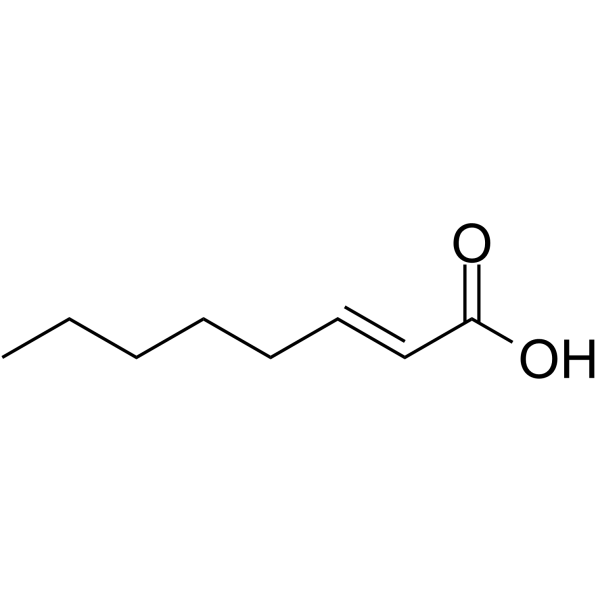
-
GC40286
(E,Z)-2-propyl-2-Pentenoic Acid
(E,Z)-2-propyl-2-Pentenoic acid is a bioactive metabolite of valproic acid that exhibits the same profile and potency of anticonvulsant activity in animal models as its parent compound without any observed teratogenicity and hepatotoxicity.

-
GC49189
(E/Z)-4-hydroxy Tamoxifen-d5
An internal standard for the quantification of (E/Z)-4-hydroxy tamoxifen

-
GC67476
(E/Z)-Sulindac sulfide
(E/Z)-Sulindac-Sulfid ist ein potenter γ-Secretase-Modulator (GSM). (E/Z)-Sulindac-Sulfid reduziert selektiv die Produktion von Aβ42 zugunsten von kürzerem Aβ Spezies. (E/Z)-Sulindac-Sulfid kann zur Erforschung der Alzheimer-Krankheit verwendet werden.
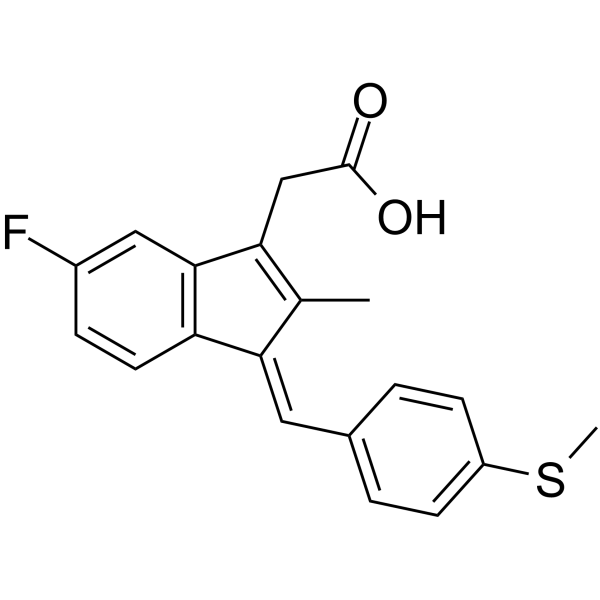
-
GC60404
(Ethoxymethyl)benzene
(Ethoxymethyl)benzol ist ein kÖrpereigener Metabolit.
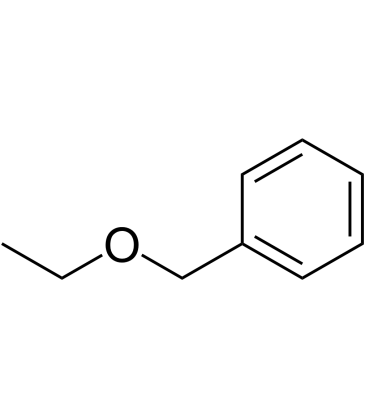
-
GA11210
(H-Cys-OH)2
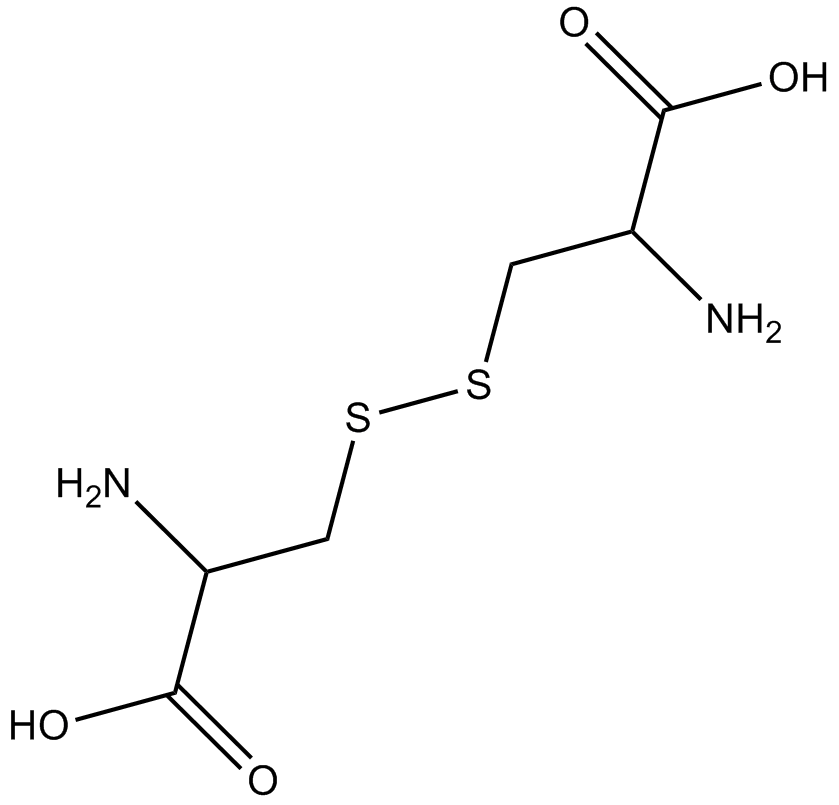
-
GN10783
(R) Ginsenoside Rh2
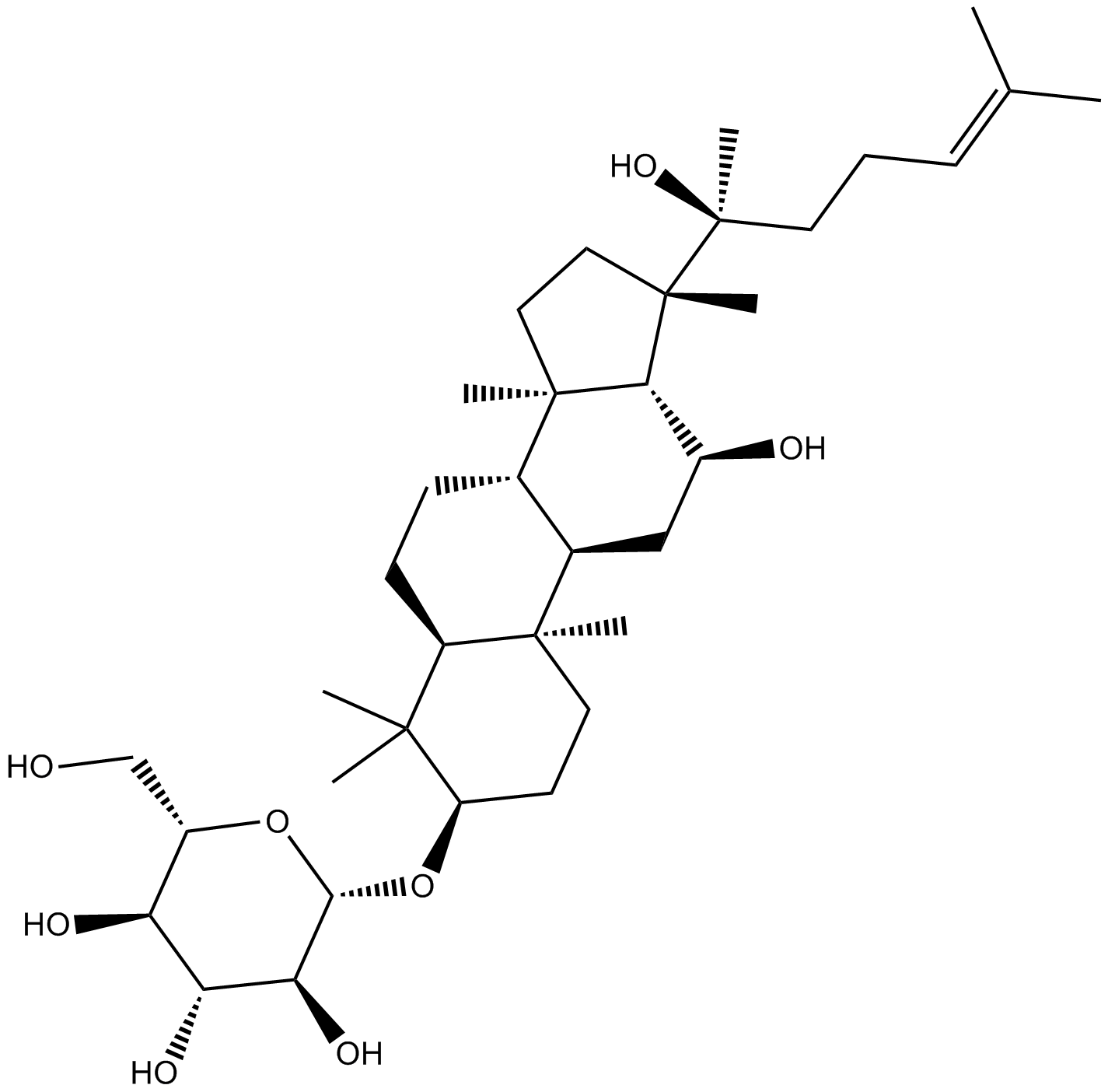
-
GC41721
(R)-α-Lipoic Acid
(R)-α-Lipoic acid is the naturally occurring enantiomer of lipoic acid, a cyclic disulfide antioxidant.

-
GC34442
(R)-(+)-Citronellal
(R)-(+)-Citronellal, isoliert aus Zitrus-, Lavendel- und EukalyptusÖlen, ist ein Monoterpenoid und Hauptbestandteil von CitronellalÖl mit ausgeprÄgtem Zitronenduft.
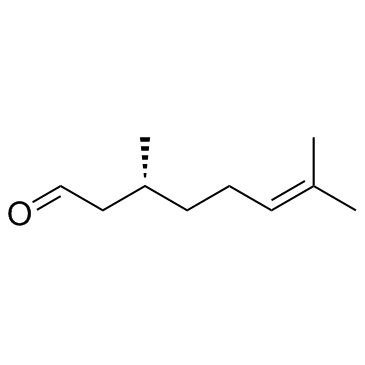
-
GC38262
(R)-(-)-1,3-Butanediol
(R)-(-)-1,3-Butandiol dient zur Regulierung des Kohlenhydrat- und Lipidstoffwechsels.
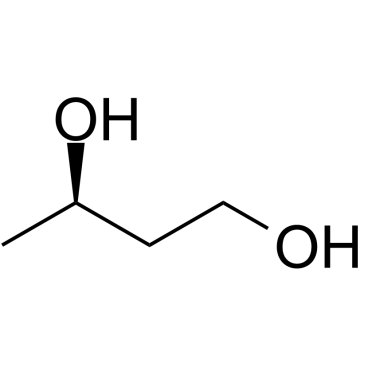
-
GC62737
(R)-(-)-O-Desmethyl Venlafaxine D6

-
GC30210
(R)-3-Hydroxybutanoic acid
(R)-3-HydroxybutansÄure ist ein Metabolit und wird aus AcetessigsÄure katalysiert durch 3-Hydroxybutyrat-Dehydrogenase umgewandelt.
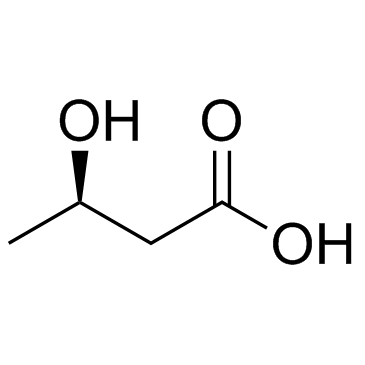
-
GC61759
(R)-3-Hydroxybutanoic acid sodium
(R)-3-HydroxybutansÄure-Natrium ((R)-3-HydroxybuttersÄure) ist ein Metabolit, der aus AcetessigsÄure umgewandelt wird, katalysiert durch 3-Hydroxybutyrat-Dehydrogenase.
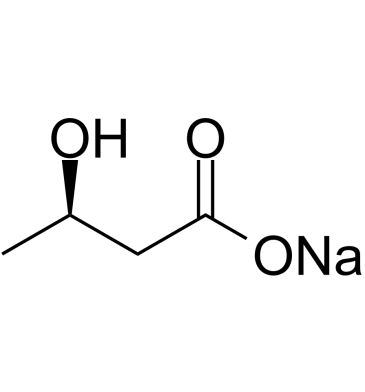
-
GC30661
(R)-3-Hydroxyisobutyric acid
(R)-3-HydroxyisobuttersÄure ist ein Zwischenprodukt in den Signalwegen von L-Valin und Thymin und spielt eine wichtige Rolle bei der Diagnose der sehr seltenen erblichen Stoffwechselerkrankungen 3-HydroxyisobuttersÄure-Azidurie und Methylmalon-Semialdehyd-Dehydrogenase-Mangel.
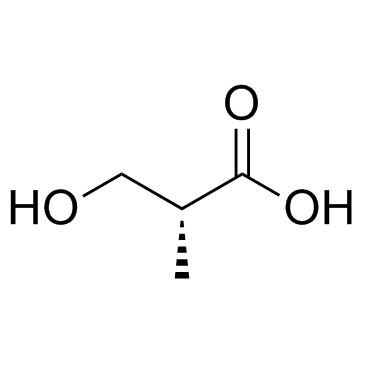
-
GC38282
(R)-5-Oxopyrrolidine-2-carboxylic acid
(R)-5-Oxopyrrolidin-2-carbonsÄure ist ein kÖrpereigener Metabolit.
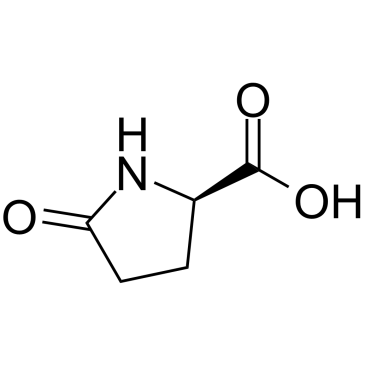
-
GC19012
(R)-GNE-140
(R)-GNE-140 ist ein potenter Inhibitor der Laktatdehydrogenase A (LDHA) mit IC50-Werten von 3 nM und 5 nM fÜr LDHA bzw. LDHB; (R)-GNE-140 ist 18-mal wirksamer als das S-Enantiomer.
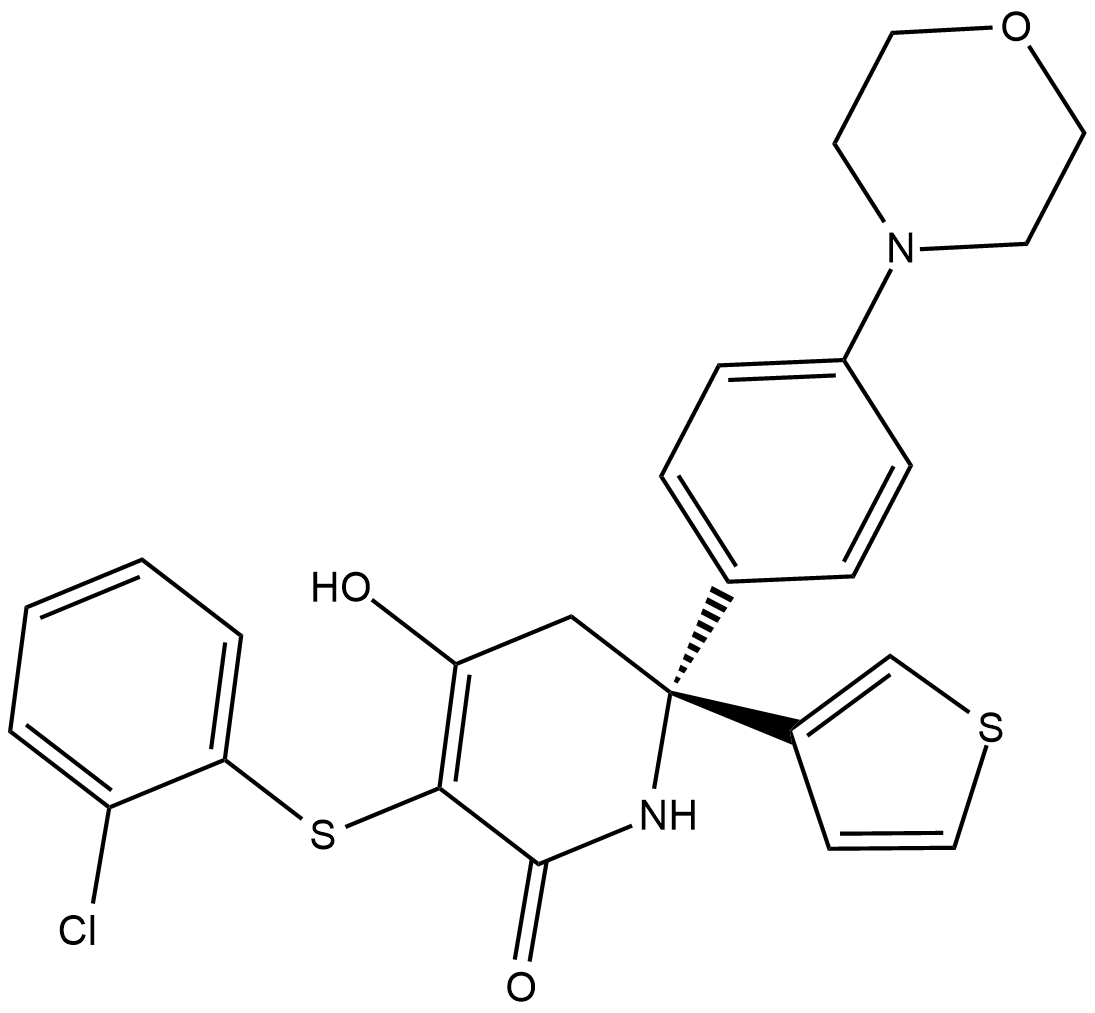
-
GC52290
(R)-HTS-3
An inhibitor of LPCAT3

-
GC61858
(R)-MLN-4760
(R)-MLN-4760, das R-Enantiomer von MLN-4760, ist ein ACE2-Inhibitor mit einem IC50-Wert von 8,4 μM.

-
GC38364
(R)-Ornithine hydrochloride

-
GC38363
(R)-pyrrolidine-2-carboxylic acid
(R)-Pyrrolidin-2-carbonsÄure ist ein kÖrpereigener Metabolit.
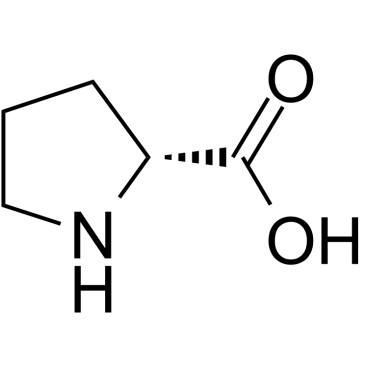
-
GC38720
(R)-Trolox
(R)-Trolox ist ein Vitamin-E-Analogon und ein kompetitiver Tyrosinase-Inhibitor mit einem Ki-Wert von 0,83 mM und einem ID50-Wert von 1,88 mM. Das (R)-Trolox hat eine stÄrkere Tyrosinase-AffinitÄt als das (S)-Enantiomer (Ki-Wert von 0,61 mM).
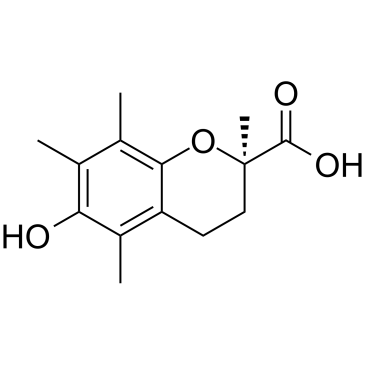
-
GC39832
(R,R)-(+)-Hydrobenzoin
(R,R)-(+)-Hydrobenzoin ist ein Organokatalysator.
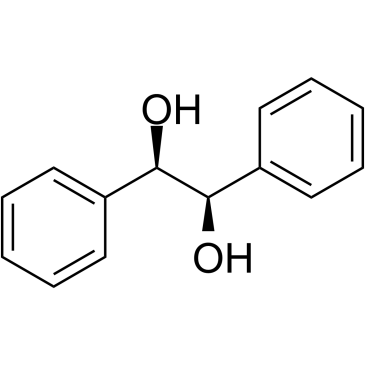
-
GC41722
(R,S)-Carvedilol Glucuronide
(R,S)-Carvedilol glucuronide is a racemic mixture of the carvedilol metabolites (R)-carvedilol glucuronide and (S)-carvedilol glucuronide.

-
GC34417
(R,S)-Ivosidenib ((R,S)-AG-120)
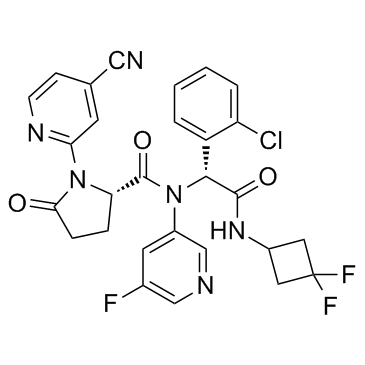
-
GC60410
(Rac)-3′-Hydroxy simvastatin
(Rac)-3′-Hydroxy Simvastatin ist ein Metabolit von Simvastatin.
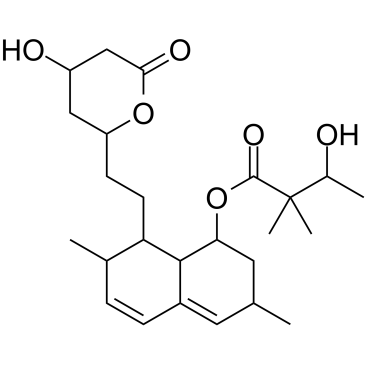
-
GC68414
(Rac)-Atropine-d3
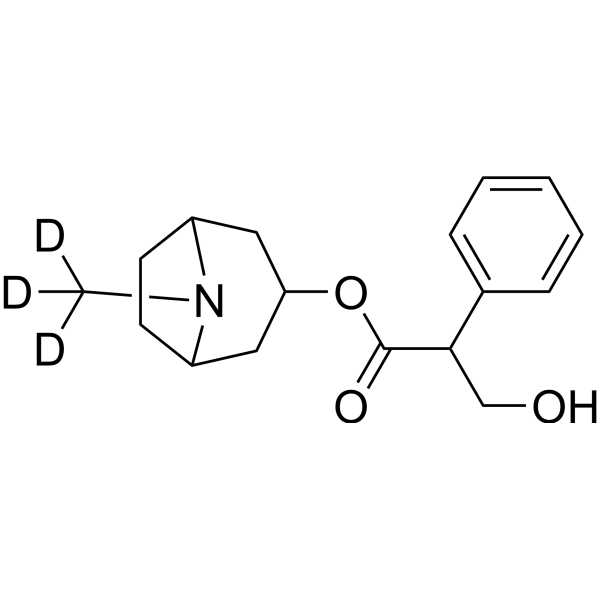
-
GC67993
(Rac)-Cotinine-d4
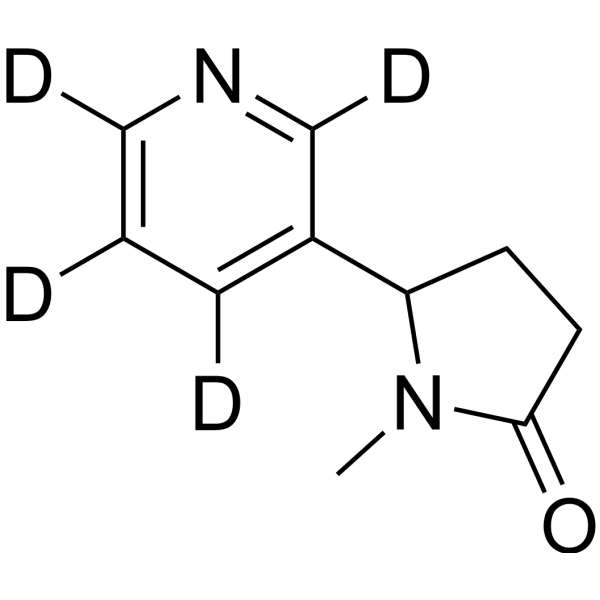
-
GC62744
(Rac)-OSMI-1
(Rac)-OSMI-1 ist das Racemat von OSMI-1.
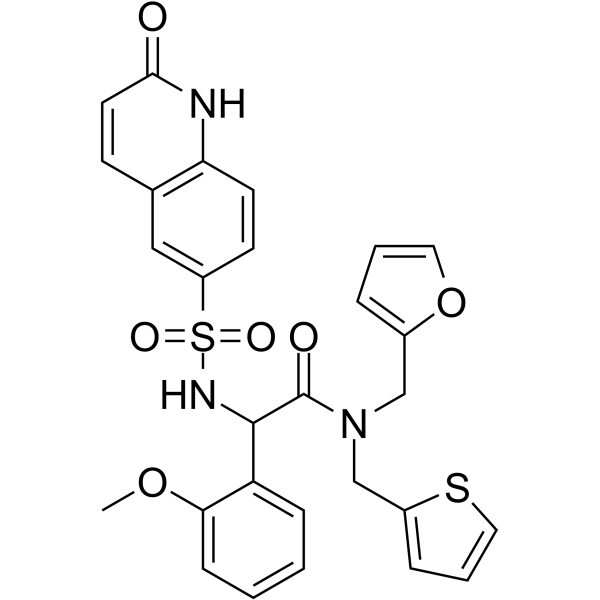
-
GC39833
(S)-(+)-1,2-Propanediol
(S)-(+)-1,2-Propandiol ist ein kÖrpereigener Metabolit.
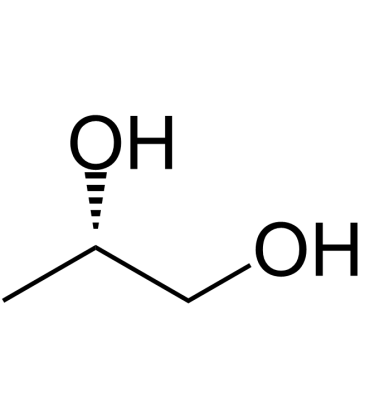
-
GC62747
(S)-(-)-Citronellal
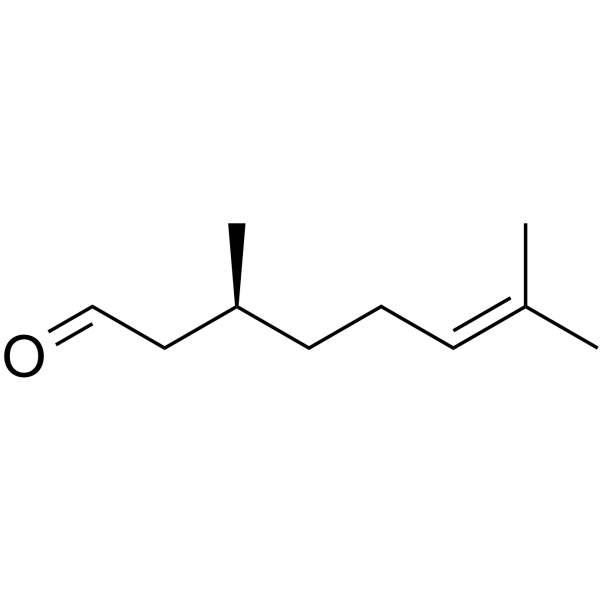
-
GC38371
(S)-(-)-Phenylethanol
(S)-(-)-Phenylethanol ist ein kÖrpereigener Metabolit.
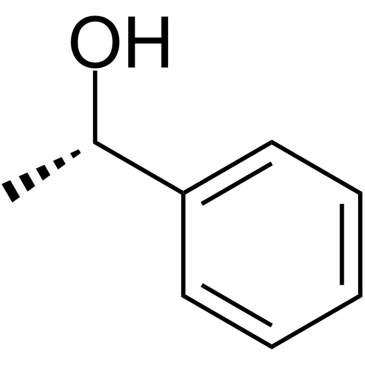
-
GC62748
(S)-2-Amino-3-(4-hydroxy-3,5-diiodophenyl)propanoic acid dihydrate
(S)-2-Amino-3-(4-hydroxy-3,5-diiodphenyl)propansÄuredihydrat ist ein kÖrpereigener Metabolit.
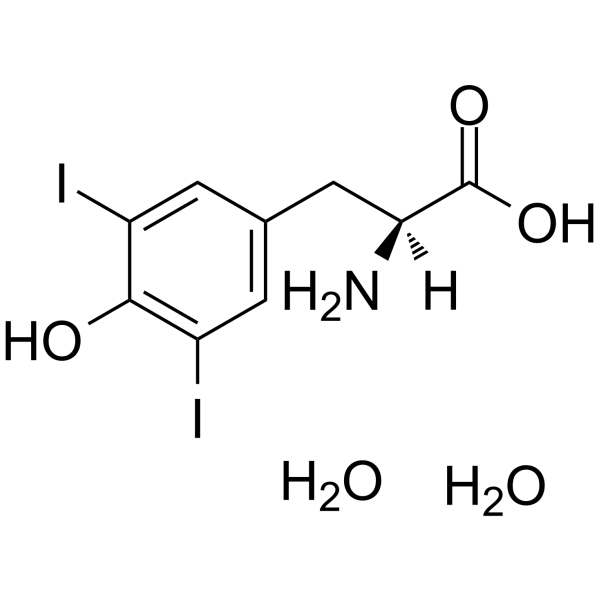
-
GC31630
(S)-2-Hydroxy-3-phenylpropanoic acid
(S)-2-Hydroxy-3-phenylpropansÄure ist ein Produkt des Phenylalanin-Katabolismus.
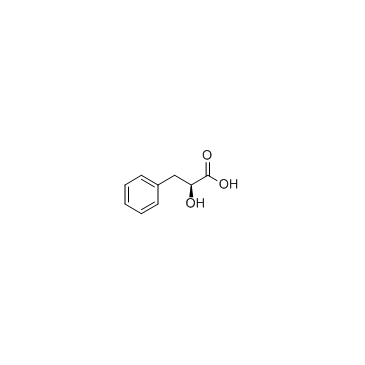
-
GC64746
(S)-2-Hydroxybutanoic acid
(S)-2-HydroxybutansÄure ist das S-Enantiomer von2-HydroxybutansÄure.
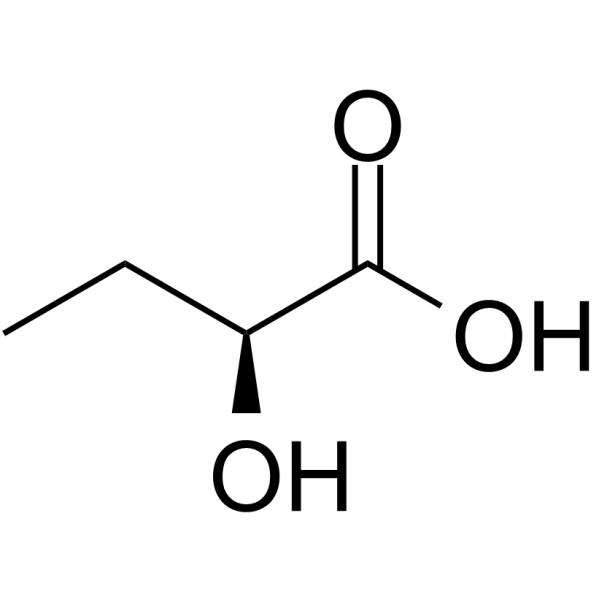
-
GC31622
(S)-2-Hydroxysuccinic acid
(S)-2-HydroxybernsteinsÄure ((S)-2-HydroxybernsteinsÄure) ist eine DicarbonsÄure in natÜrlich vorkommender Form, trÄgt zum angenehm sÄuerlichen Geschmack von FrÜchten bei und wird als Lebensmittelzusatzstoff verwendet.
